#Extinct Cephalopod
Explore tagged Tumblr posts
Photo

Fossil Ammonite ZETOCERAS ZETES | Lower Pliensbachian Jurassic Hinterriss Austria | Genuine Specimen with COA
Own an authentic and scientifically significant ammonite fossil—this beautifully preserved specimen of Zetoceras zetes comes from the Lower Pliensbachian stage of the Early Jurassic period, collected near Hinterriss, Austria. Ammonites like this are extinct marine cephalopods, known for their coiled shells and key role in biostratigraphy.
Fossil Type: Ammonite (Extinct Marine Cephalopod)
Species: Zetoceras zetes
Geological Period: Jurassic (~201 to 174 million years ago)
Geological Stage: Lower Pliensbachian (~190 to 183 million years ago)
Location: Hinterriss, Tyrol, Austria
Scale Rule: Squares/Cube = 1cm (See photo for full sizing)
Specimen: What you see is exactly what you��ll receive—the photographed fossil
Authenticity: All of our fossils are 100% genuine specimens and come with a Certificate of Authenticity
Geological and Paleontological Information
Zetoceras zetes is an extinct genus of ammonites, a group of externally-shelled cephalopods that flourished in the Mesozoic oceans. The Lower Pliensbachian marks an important interval in Early Jurassic marine evolution, and ammonites from this stage are key for regional and global biostratigraphic correlation.
Phylum: Mollusca
Class: Cephalopoda
Subclass: Ammonoidea
Order: Ammonitida
Superfamily: Eoderoceratoidea
Family: Dactylioceratidae
Genus: Zetoceras
Species: zetes
Depositional Environment: Shallow marine shelf with calcareous sedimentation; oxygen-rich waters conducive to ammonite proliferation
Morphological Features: Moderately involute shell with fine ribbing and prominent whorls; the shell’s complex suture lines and preserved surface features reflect typical early Jurassic ammonoid characteristics
Biozone: Associated with the Uptonia jamesoni or Amaltheus margaritatus ammonite zones (depending on stratigraphic context in Austria)
Identifier: Described by Mesozoic paleontologists refining the taxonomy of early Jurassic cephalopods in the Alpine region
Why This Fossil is Special
Zetoceras zetes from Hinterriss is a rare and well-documented ammonite species, offering both aesthetic appeal and scientific value. Its preservation within the classic Lower Jurassic deposits of the Northern Calcareous Alps makes it an ideal collector’s piece or teaching specimen.
Why Buy From Us?
100% genuine fossil with Certificate of Authenticity
Specimen shown in the listing photos is the one you’ll receive
Ethically sourced and scientifically accurate descriptions
Excellent for collectors, educators, or as a unique display item
Add a stunning piece of Mesozoic marine life to your collection with this authentic Zetoceras zetes ammonite fossil from the Lower Jurassic Pliensbachian stage of Hinterriss, Austria—a coiled and ribbed legacy from the ancient seas over 185 million years ago.
#Zetoceras zetes#fossil ammonite#Jurassic ammonite#ammonite fossil Austria#Pliensbachian ammonite#Hinterriss fossil#ammonite shell#Lower Jurassic fossil#certified ammonite fossil#genuine ammonite#ammonite with certificate#fossil marine invertebrate#natural history fossil#ammonite collection#extinct cephalopod#ammonite display specimen
0 notes
Text
Ammonites were some of the most diverse organisms in the ancient ocean. The Museum holds one of the world’s largest collections of ammonites, containing nearly two million specimens that represent 300 million years of Earth’s history!
#science#amnh#museum#fossil#nature#natural history#animals#paleontology#fact of the day#ammonite#prehistoric#cephalopod#squid#fossils#museums#natural history museum#ancient animals#cool animals#ocean life#extinct animals#did you know
1K notes
·
View notes
Text
#Paleostream 8/02/2025
here's today's #Paleostream sketches!!!
today we sketched Magyarosaurus (this is probably my best flocking sketch in a while), Pycnonemosaurus, Platysomus, and Palaeoctopus
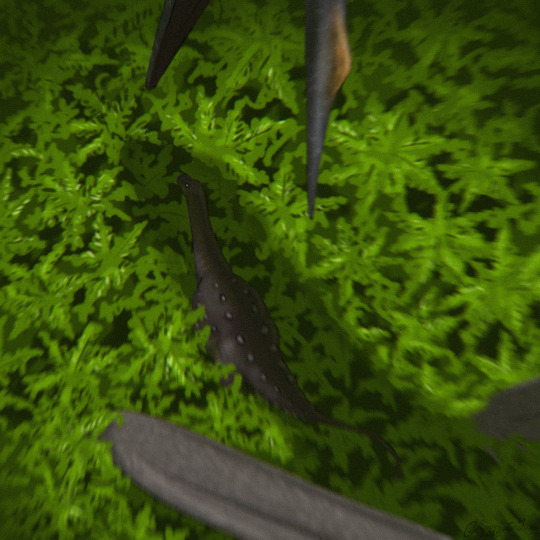

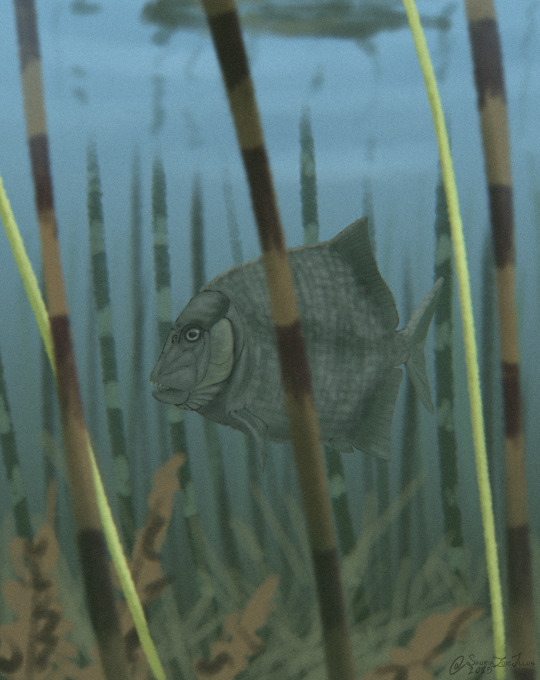

#Paleostream#paleoart#digital art#paleontology#digital artwork#artists on tumblr#palaeoart#digital illustration#sciart#id in alt text#dinosaur#sketch#sketches#paleoblr#palaeoblr#sauropod#titanosaur#Magyarosaurus#Hateg Island#pterosaur#azhdarchid#Hatzegopteryx#theropod#abelisaurid#Pycnonemosaurus#fish#fish art#extinct fish art#Platysomus#cephalopod
148 notes
·
View notes
Text
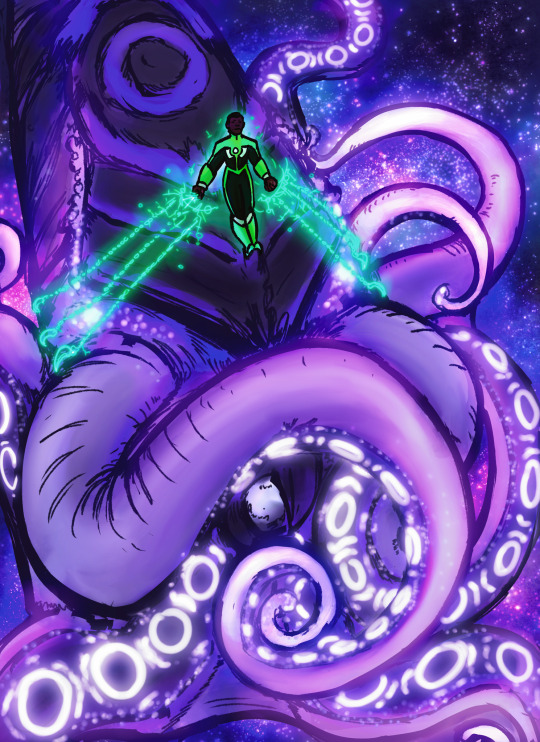
john stewart: proselyte rider
ref for my proselyte design under the cut (i think i unintentionally made it look like a reaper)

#my art#dc comics#green lantern#john stewart#proselyte#it’s actually based on extinct cephalopods#and it incidentally came out looking like a purple harbinger a bit#it’s like the universe telling me… Thal Play Mass Effect Again Right Now#i got into mass effect and green lantern at the same time they destroyed my 10 yo mind
79 notes
·
View notes
Text

Goodnight, Orthoceras.
(AKA Getting emotional while drawing this Orthoceras fossil my friend gave me as a birthday gift.)
342 notes
·
View notes
Text
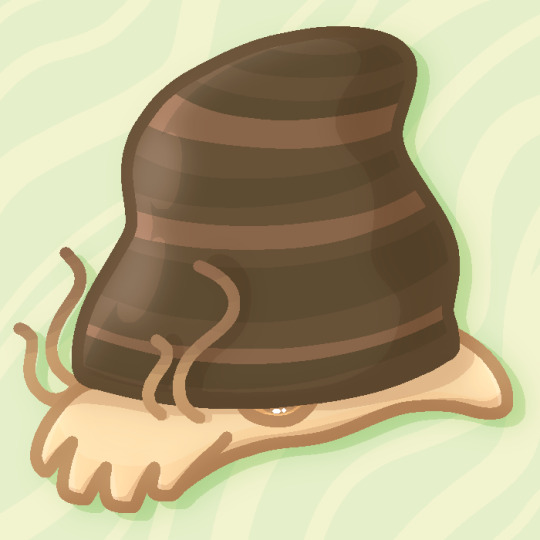
today's daily is: the knightoconus! (k. antarcticus)
( requested by @sketchy-little-critter :] )
#extinct daily#knightoconus#knightoconus antarcticus#art#drawing#paleoart#cephalopod#monoplacophora#if you told me this thing is the ancestor of snails i would believe you. there is no way that this is more related to a squid than a snail
57 notes
·
View notes
Text
Just like the last time, all animals will behave as they would in nature (or as close to for all extinct species) the only difference is that your defender(s) will avoid causing friendly fire. However, any attempt to harm and/or eat your defender(s) will cause them to turn on you.
Also thought it wise to specify specific options to avoid confusion and people trying to bend the rules. (Sorry if I’m sounding like a party-pooper)
#poll#wet beast wednesday#invertibrates#cephalopods#crabs#cnidarians#siphonophore#fish#sharks#cetaceans#dolphin#extinct animals#plesiosaur#crocodylomorpha#thalattosuchians#mosasaurid#marine animals#marine life#marine biology
193 notes
·
View notes
Text

Orthoceras regulare
struggled a bit with the tentacles on this one but figured it out in the end :)
Image ID: An orthoceras regulare, a type of extinct nautiloid, with a yellow and brown shell with pink and dark brown patterning and brown tentacles with dark brown patterning. The eyes are pink and yellow as well. End ID
#cephalopod#nautilus#nautiloid#extinct animal#cute#colorful#my art#digital art#love this weirdo#also their shells make them look like they are wearing party hats which is hilarious#orthoceras#orthoceras regulare#paleoart#lil guys
26 notes
·
View notes
Photo

RARE Cenoceras excavatum Fossil Nautilus – Bajocian Jurassic – EURECY CALVADOS, France – Genuine + COA!
RARE: Cenoceras excavatum Fossil Nautilus – Bajocian, Jurassic – EURECY CALVADOS, France
📜 From the Prestigious Alice Purnell Collection! 📜
✅ 100% Genuine Specimen – Comes with a Certificate of Authenticity (COA)
📏 Scale Rule / Cube = 1cm (Full sizing details in photos)
📸 You will receive the exact fossil shown in the images
🦑 Fossil Overview:
This is a RARE and well-preserved Cenoceras excavatum Fossil Nautilus from the Bajocian Stage of the Middle Jurassic (~170 million years old), sourced from Eurecy Calvados, France. Cenoceras is a genus of extinct nautiloids that thrived in Jurassic seas, characterized by its beautifully coiled and chambered shell, which provided buoyancy control.
Unlike ammonites, which have intricate suture patterns, Cenoceras excavatum exhibits a simpler, chambered shell structure, making it a significant evolutionary link between ancient and modern cephalopods. This fossil provides a fascinating glimpse into Jurassic marine ecosystems and the adaptation of cephalopods over time.
This particular specimen originates from the Alice Purnell Collection, one of the largest and most renowned ammonite and cephalopod fossil collections in the world. Fossils from this collection are highly sought after, ensuring this piece holds both scientific and historical significance.
🪨 Geological & Scientific Details:
Species: Cenoceras excavatum
Group: Nautiloid Cephalopod
Age: Jurassic (Middle Jurassic, Bajocian Stage, ~170 Million Years Ago)
Formation: Marine Deposits of Eurecy Calvados
Location: Eurecy Calvados, France
Shell Features: Coiled and chambered structure with subtle growth lines
Preservation: Exceptional preservation with clearly defined chambers and excellent surface details
Cenoceras species like C. excavatum thrived in warm, shallow Jurassic seas, using their chambered shells for buoyancy control. Their evolutionary adaptations played a crucial role in cephalopod history, bridging the gap between ammonites and modern nautiluses.
🛒 Why Buy This Fossil?
✔ RARE Cenoceras excavatum specimen – Highly sought after from this locality
✔ Prestigious Alice Purnell Collection provenance – A must-have for serious collectors
✔ Authentic Jurassic Fossil – 170-million-year-old prehistoric relic
✔ Perfect for Collectors, Museums, and Educational Displays
✔ 100% Genuine & Certified Fossil – Comes with a Certificate of Authenticity (COA)
✔ Great Investment Piece – Fossils of this rarity and quality only increase in value
📦 Shipping & Packaging:
Securely packed to ensure safe arrival
Tracked & insured shipping for peace of mind
Worldwide shipping available! 🌍
🔬 Don’t miss out on this scientifically significant, rare fossil! Perfect for serious collectors, museums, or as a unique display piece.
📥 Buy with confidence – 100% authentic, fully certified, and ready to ship!
🔎 Check out our other fossils & rare specimens!
🔥 RARE Cenoceras excavatum – Once it’s gone, it’s gone! 🔥
#Fossil Nautilus#Cenoceras excavatum#Jurassic Fossil#Bajocian Fossil#Nautiloid Fossil#Ammonite Fossil#Paleontology#Fossil Collector#Prehistoric Sea Life#Extinct Cephalopod#Rare Fossil#Authentic Fossil#Geological Specimen#Museum Fossil#Alice Purnell Collection#France Fossils#Eurecy Calvados Fossil
0 notes
Text
Paleostream 18/05/2024
here's today's #Paleostream sketches
today we drew Qianzhousaurus, Yezoteuthis, Shastasaurus, and Ptychodus
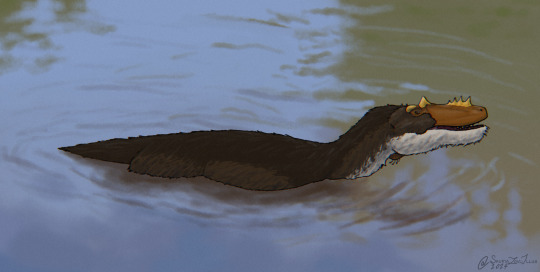
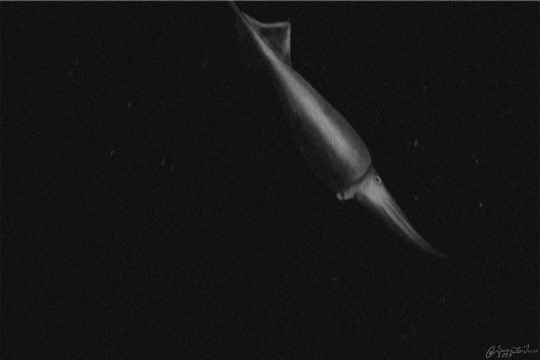
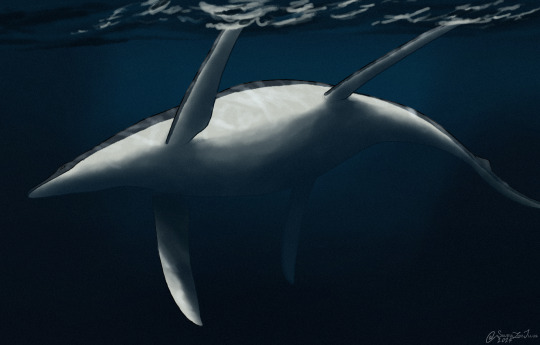
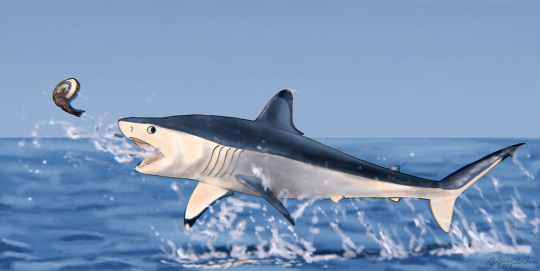
#Paleostream#paleoart#paleontology#digital art#artists on tumblr#digital artwork#palaeoart#digital illustration#sciart#id in alt text#palaeoblr#paleoblr#dinosaur#ichthyosaur#triassic#cretaceous#theropod#fish#fish art#extinct fish art#extinct fish#shark#extinct shark#shark art#marine reptile#squid#cephalopod#deep sea#Qianzhousaurus#Yezoteuthis
254 notes
·
View notes
Text
This is FASCINATING!! Truly I am enthralled!
But then around 30 million years ago — halfway through the Age of Mammals, give or take — something happened. The nautiloids started disappearing. Fewer species, less diversity. Bit by bit they shrank back into their current small range. What happened halfway through the Age of Mammals? Well, here’s one clue: the nautiloids’ long retreat showed a pattern. It wasn’t everywhere and all at once. They disappeared first in the northern arctic regions; then in the Antarctic; then in temperate zones; finally across most of the tropics except that one small patch. This pattern suggested a culprit: a warm-blooded predator that evolved in the Arctic and then spread around the world. But… the armored cephalopod design had been around forever. They’d been living with predators for half a billion years. Sharks. Primitive armored fish. Not-so-primitive modern fish. In the age of dinosaurs, they had to deal with ichthyosaurs, plesiosaurs, and mosasaurs. Back in the Paleozoic, they were hunted by eight-foot-long giant sea scorpions. Way back in the Cambrian, they had to live with the anomalocariids. In the early Age of Mammals, there were primitive whales and sea-going crocodiles. The armored cephalopod design took them all in stride and kept going. So what happened?
#nautiloid#cephalopod#mollusc#extinction#Always an animal adventure#always a learning adventure#research paper#scientific research#scientific study#research document#seals#photography#fascinating#for later#grad
7K notes
·
View notes
Note
Why do so many cephalopods die immediately after reproducing?
Okay so the physical reason is that mating triggers a change in their brain chemistry and hormone levels that essentially poisons them and makes them behave strangely and stop eating. If the gland responsible for this change is removed, the cephalopod continues as normal and lives for many months after laying eggs.
But the evolutionary reason is the end-Cretaceous extinction. Cephalopods used to have a pretty huge variation in lifespan, ranging from a few months to over 200 years (https://www.iflscience.com/ancient-paperclipshaped-sea-creature-could-live-for-200-years-57685)
Large, long-lived cephalopods were hit hard by the mass extinction and those who survived did so by being short-lived and reproducing quickly, so they were selected for as cephalopods recovered from the extinction event. The most ancient species, the nautilus, can live for several decades and mate many times, hinting at the high diversity of life strategies that cephalopods used to have.
So yeah, the reason octopuses usually only live a year or two before self-destructing is because of that fucking asteroid.
6K notes
·
View notes
Text

Cybertronian Tytanus, are a race of genetically modified cybertronians (design taken from Transformers Armada!!). They are the product of Quintenssons’ attempt at colonising Cybertron. The Quintesson responsible for designing the specie is called Quintus Tytanus (yes, he called the specie after himself ) and is currently the ruler of the specie and is considered a God by his creations.
In my AU (TFP) the Quintessons tried many different things to change the planet of Cybertron to their needs, unsuccessfully. The Tytanus were created as a proof of concept, to see if Quintessons’ biology was compatible with Cybertron to begin with. Because of that, Tytanus are similar to their creators in many ways.
They got a lot of organic in their techno-organic biology, are all on the bigger size and have been recorded by historians to be in direct competition with the Predacons (before they went extinct). What sets them completely apart from a regular native from Cybertron is the fact that, like the Quintessons, Tytanus are life bearers. Which means that their way of propagation is completely detached from the planet.
In my (TFP) AU, the Quintessons are a specie of alien cephalopods not native to Cybertron, that arrived on the planet to escape extinction, as their own planet was becoming inhospitable.
#Transformers#transformers armada#transformers megatron#transformers optimus#quintessons#transformers au#transformers prime#tfp
179 notes
·
View notes
Text
Yeah I know this poll is a little apex predator heavy, but to be frank, most sea creatures (living and extinct) would amount to nothing more than fish/whale/ichthyosaur/shark, etc. fodder and that would not make for a fun poll.
#poll#wet beast wednesday#fish#crabs#cephalopods#sharks#marine reptiles#sea turtle#jellyfish#box jellyfish#extinct species#prehistoric life#mosasaurus#ichtyosaurs#whales#cetaceans#dolphin#marine life#marine biology
136 notes
·
View notes
Text
Round 3 - Cephalopoda - Nautilida




(Sources - 1, 2, 3, 4)
Order: Nautilida
Common Name: “nautilus” (pl: “nautiluses” or “nautili”)
Families: 1 - Nautilidae
Anatomy: Smooth external shells with internal chambers, 50-90+ tentacles, toothed radula within parrotlike beak
Diet: crustacean molts, hermit crabs, carrion
Habitat/Range: Indo-Pacific ocean, at depths of several hundred metres
Evolved in: Order Nautilida in the Devonian, Family Nautilidae in the Triassic (230 million years ago)
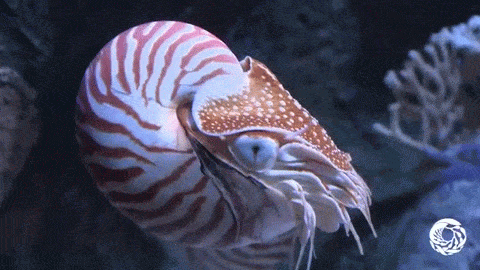
Propaganda under the cut:
During the Middle Devonian, Nautilus species were more diverse, and their shells were more varied than those found in species of living Nautilus, ranging from curved (cyrtoconic), through loosely coiled (gyroconic), to tightly coiled forms, represented by the Rutoceratidae, Tetragonoceratidae, and Centroceratidae. Only a single genus, Cenoceras, with a shell similar to that of the modern nautilus, survived the Triassic extinction, at which time the entire Nautiloidea almost became extinct. They diversified again, but never reached the extent of diversity they had before the Triassic extinction. The nautilids were not as affected by the end Cretaceous mass extinction as the Ammonoids that became entirely extinct, possibly because their larger eggs were better suited to survive the conditions of that environment-changing event.
Nautiluses are the sole living cephalopods to have external shells. They can withdraw completely into their shell and close the opening with a leathery hood formed from two specially folded tentacles.
The nautilus has the extremely rare ability to withstand being brought to the surface from its deep natural habitat without suffering any apparent damage from the experience. Where fish or crustaceans brought up from such depths inevitably arrive dead, a nautilus will be unfazed despite the pressure change of as much as 80 standard atmospheres (1,200 psi).
Nautiluses have a seemingly simple brain, lacking the large complex brains of octopus, cuttlefish and squid, and had long been assumed to lack intelligence. But recent experiments have shown not only memory, but a changing response to the same event over time.
In a study in 2008, a group of Chambered Nautiluses (Nautilus pompilius) were given food as a bright blue light flashed until they began to associate the light with food, extending their tentacles every time the blue light was flashed. The blue light was again flashed without the food 3 minutes, 30 minutes, 1 hour, 6 hours, 12 hours, and 24 hours later. The nautiluses continued to respond excitedly to the blue light for up to 30 minutes after the experiment. An hour later they showed no reaction to the blue light. However, between 6 and 12 hours after the training, they again responded to the blue light, but more tentatively. The researchers concluded that nautiluses had memory capabilities similar to the "short-term" and "long-term memories" of the more advanced cephalopods, despite having different brain structures.
Female nautiluses spawn once per year and regenerate their gonads, making nautiluses the only cephalopods to be able to breed more than once in their lifetime.
Nautiluses may live for more than 20 years, which is exceptionally lengthy for a cephalopod, many of whom live less than 3 even in captivity and under ideal living conditions. However, nautiluses typically do not reach sexual maturity until they are about 15 years old, limiting their reproductive lifespan to often less than five years.
The osmeña pearl is not actually a pearl, but a jewellery product derived from the iridescent inner layer of the nautilus shell. Nautilus shells are also sold whole, carved as souvenirs, or historically used to make items such as lamps and cups. However, these are not simply shells that wash ashore; the animals are killed for the shell. The low fecundity, late maturity, long gestation period, and long life-span of nautiluses make them vulnerable to overexploitation, and high demand for their ornamental shells is causing population declines. In 2016 all species in the family Nautilidae were added to CITES Appendix II, regulating international trade, though in some places they can still openly be found for sale in tourist areas. The best way to combat nautilus population decline is to stop the demand for these shells.
#animal polls#I’m not gonna lie I have 1.5 nautilus shells in my house 😓#bought them when I was young and before nautiluses were protected#I know better now of course but they’re just… here… on my shelf of skulls and stuff#If you want one I suggest looking in antique and thrift shops so you’re not directly funding nautilus poaching!#don’t buy them from shell shops and other tourist attractions#or Etsy#Round 3#Cephalopoda#Nautilida
121 notes
·
View notes
Text
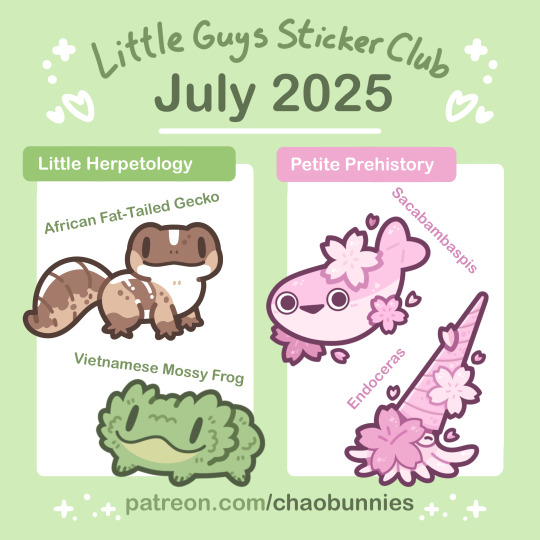


July's theme reveals! I'm retiring my pin clubs and pivoting towards a sticker club for the foreseeable future, but hopefully I can turn these designs into pins one day.
Join my Patreon by June 30th to receive your choice of herpetology, prehistory, or both sets of stickers in July!
Click below for some fun facts:
African Fat-Tailed Gecko (Hemitheconyx caudicinctus): These geckos store fat in their tails, which they use for energy when food is scarce.
Vietnamese Mossy Frog (Theloderma corticale): These frogs are masters of camouflage thanks to their moss-like appearance.
Sacabambaspis is an extinct genus of jawless fish that lived in shallow waters and likely relied on suction feeding to catch prey.
Endoceras is an extinct genus of cephalopods that made their home on the sea floor. Estimates put their length at over 18 feet!
#Patreon sticker club#mini amphibians#tiny reptiles#petite prehistory#african fat tailed gecko#vietnamese mossy frog#sacabambaspis#endoceras#paleoart#sakura
65 notes
·
View notes